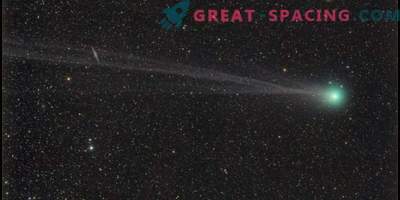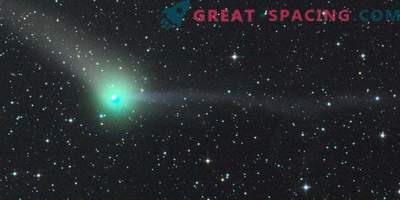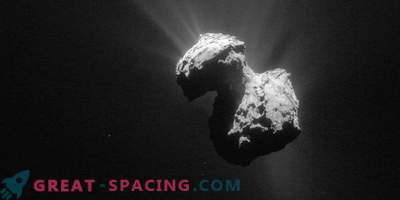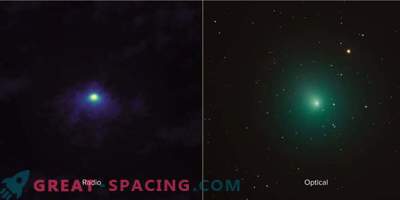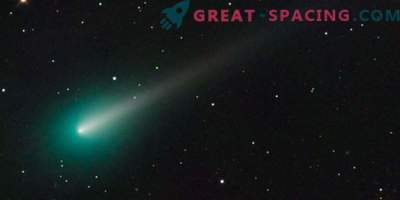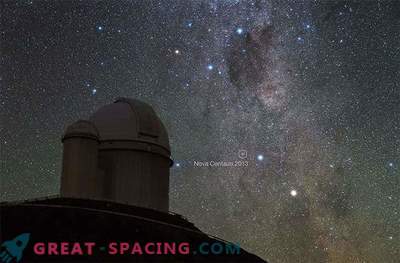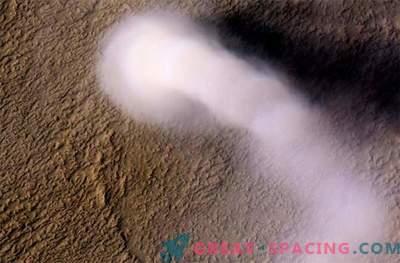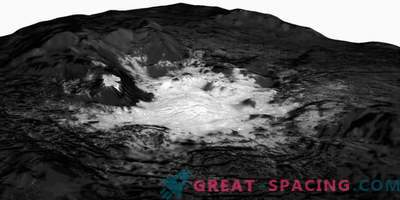
Comet C / 2017 K2
The Hubble Space Telescope managed to capture the most distant active comet located 1.5 billion miles from the Sun (beyond the Saturn orbital path). It is already heating up and forming a dust cloud with a coverage of 80,000 miles - coma.
Comet C / 2017 K2 moves millions of years from its home in the cool outer parts, where the temperature drops to -440 degrees Fahrenheit. The orbit indicates that the object came from the Oort cloud - a spherical region with a diameter per light year. Comets are icy remnants of the system formed 4.6 billion years ago.
K2 is so far and so cold that its activity is different from other comets. If in ordinary water ice evaporates, then sublimation is observed (from solid to gas). Hubble's observations show that solar events heat frozen oxygen, nitrogen, carbon dioxide and carbon monoxide, which come off and create a coma.

Scheme of the passage of comet C / 2017 K2
Due to the heat, it loses the outer shell. It is believed that before us is one of the most primitive comets. It was first noticed in May 2017 in the Pan-STARRS review. At the end of June, Hubble joined in the observations. The core extends 12 miles, and the com puter stretches 10 earth diameters. Coma is huge, so it appeared still at a great distance from the star.
It is believed that the coma existed at a distance of 2 billion miles, when the comet was located between Uranus and Neptune. Even then, it was more active and only increased each time. Interestingly, the Hubble images do not show the tail. This means that the particles are too large for the radiation pressure of the Sun.
For the next 5 years, the comet will continue to move into the internal system, and in 2022 it will approach the star beyond the orbital path of Mars. It is believed that at this stage the tail will appear.
